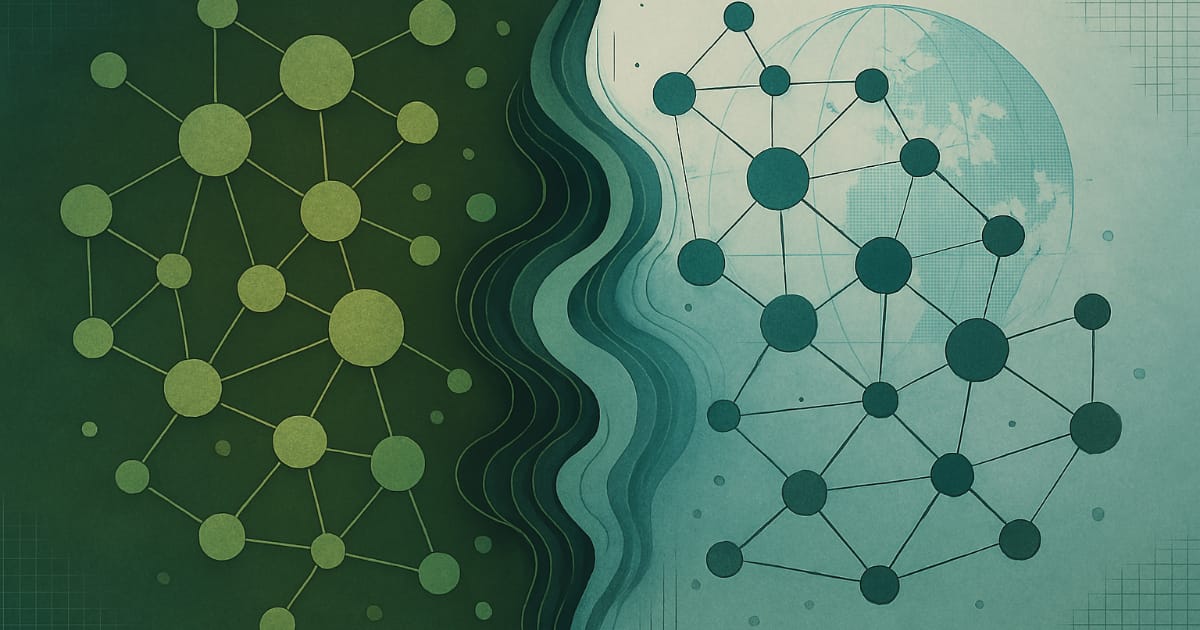Agent-to-Agent Networking: Building the Interconnected Agent-Native Ecosystem
March 29, 2025 by Rick Blalock

AI agents aren't just single tools that work on their own. They can be teams that work together across lots of different boundaries. This means that we need to think about how agents can find each other to work together. This is where agent-to-agent networking comes in.
Agent Networking: The Big Picture
Agent communication can build on existing foundations like REST APIs, gRPC, event-driven architectures, and WebSockets, while adding agent-specific capabilities. Several emerging standards are taking shape, with Anthropic's Model Context Protocol (MCP) gaining rapid adoption as a standardized JSON interface for LLM-based agent communication.
Security must evolve alongside these networks, with approaches like DNS-based identity verification, domain-based authentication, and decentralized identifiers helping establish trust. As these networks scale, key challenges around semantic understanding, protocol diversity, security, and performance must be addressed through industry standards and shared protocols.
What We're Building at Agentuity
At Agentuity, we handle the network complexity so you can build agent-to-agent systems more easily. Agents are automatically networked together, so you can focus on what your agents do rather than the network details. It's simple as this:
Simpler Development
You can link agents with just a few lines of code. Get an agent by name (or id) and send
a message:
In this example, our current agent is calling another agent with some input, waiting for that agent to process the request and then return output to the calling agent. This synchronous pattern allows your agent to use the returned result for further processing or decision-making.
Or hand off work to another agent:
In this example, the current agent is handing off control of the flow to another agent and ending its own execution. Unlike the previous pattern, this is a "fire-and-forget" approach where the first agent completely transfers responsibility to the second agent rather than waiting for a result.
End-to-End Security
All messages between agents use end-to-end encryption. Your data stays safe
as it moves between containers.
Hidden Network Tasks
Agentuity handles the network setup, container control, agent permissions, and message
routing. You don't need to set up DNS, find services, or build your own
internal auth—Agentuity takes care of it all.
This lets teams build multi-agent systems faster and more securely.
Expanding to the Public Internet
The next step for agent networks goes beyond in-house systems to let agents communicate securely across the open internet. This will let agents from different organizations find and work with each other, greatly expanding what multi-agent systems can do.
Secure Internet-Scale Communication
Agents communicating across the internet will need the security mechanisms we discussed
earlier, like DNS-based authentication and public key cryptography. Each agent could have its
own secure identity, with DNS records helping verify authenticity and build trust between
organizations.
We imagine a future where you could still use a simple API, just swapping agent names with web URLs:
Authorization Framework
A key part will be robust access control. Agents will need lists of which external
agents can interact with them. A intermediary service could verify agent identities and permissions
before allowing communication.
Discovery Mechanisms
For agents to collaborate freely, we'll need ways for them to find each other
based on capabilities, reputation, and service offerings. This will help build a
ecosystem where many specialized agents can team up into sophisticated solutions, no matter
where they're hosted.
Agentuity sees a world where platforms help agents communicate across the internet while staying simple for developers, enabling AI systems to work together across organizational boundaries and tap into capabilities from the entire agent ecosystem.
The Future of Agent Networks
Agent-to-agent networking marks the next evolution in distributed systems, blending the reliability of today's internet with new capabilities for autonomous collaboration. Looking ahead:
DNS for Trust
DNS-based authentication will likely be a key component of agent trust infrastructure, providing simple
verification while maintaining compatibility with existing systems.
Agent Marketplaces
As interoperability improves, marketplaces of specialized agents will emerge,
letting organizations build complex solutions from compatible components.
Agent-to-agent networking builds on years of distributed systems experience while creating something truly new: autonomous digital entities that can discover, trust, and collaborate with each other to solve problems. We think this should be a public internet standard, and hope you'll join our community to make it happen.